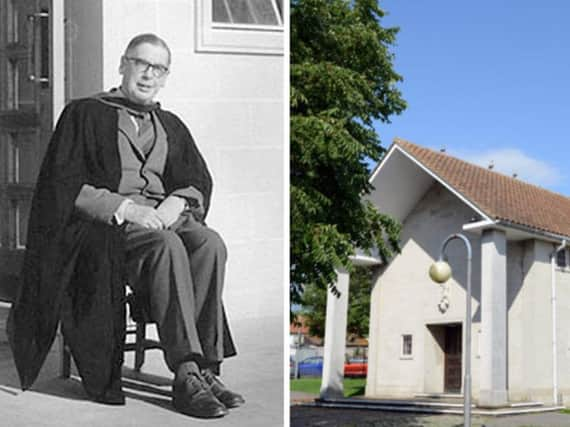Chapel's unique role in remembering sacrifice


This week’s contribution certainly falls into the latter category.My part in it began with an email out of the blue in February 2015. It read: “I remember a David Arnold being a classmate of mine at Pells School in Lewes in the early 1960’s. Is that you or is it just a coincidence that a David Arnold writes for the ‘Sussex Express’?”That email emanated from David Carter and I was indeed the David Arnold in question. I was in Mr. Turner’s class at the Pells in 1962-63 after moving to Lewes from South London. The name David Carter immediately resonated with me and I recalled him as a friend in those far-off days. But it also struck me that I hadn’t met with him in over half a century! The reason being that one David (me) failed the Eleven-plus exam and went on to attend Lewes County Secondary School while the other David passed and was duly admitted to Lewes County Grammar School for Boys. Our paths in life took us on separate journeys.David lives in Surrey but has family in Sussex and we’ve subsequently met up on several occasions. He’d lived in Sun Street while at the Pells and told me that his sister Sally had helped produce the Lewes Historical Society’s recent book “The Sun Street Story”. I have a copy and inside there are photos of the Carter family including David.David has another reason to visit Lewes. He is a Trustee of the Priory School, Lewes Memorial Chapel Trust. As a pupil at the secondary school I was always aware of the chapel within the next-door grammar school but never had cause to pay a visit. It was just there. My reunion with David, however, has revealed to me of just what a unique place it occupies in Sussex history.To begin with, the chapel may be the only building within a state school that is registered as a war memorial. It was dedicated as such to commemorate the 55 Old Boys of the grammar school who lost their lives on active service in the Second World War. That strikes me as a shocking toll of young men considering it was a school of modest size.Headmaster Neville Bradshaw was determined they must be remembered. He wrote later: “It was in January 1942, as I lay in a hospital bed recovering from an operation, that the thought occurred of how appropriate a chapel would be as a memorial to those lads, sadly growing in number, who were sacrificing their lives in the Forces.“It was impossible to do anything practical until the conflict ceased. One could, however, make known to parents and Old Boys what I had in mind. “As casualties occurred, parents began to send ‘In Memoriam’ donations to a ‘Chapel Fund’. We also had several acres of land that proved to be a source of income. It grew vegetables that we sold to the school kitchen. “We claimed the government ‘ploughing-up grant’ and when we grew potatoes, the ‘potato subsidy’. An occasional grass crop was made into hay and sold to a Lewes corn merchant.”Neville Bradshaw thought his chapel would cost around £10,000. As it happened his estimate was wildly out as was his original timetable for the build. Eventually, on Sunday 10th July 1960, a dedication service was held attended by 1,500 parents, pupils and Old Boys. Families of the 55 fallen were also present.Three weeks later, Neville Bradshaw retired after 30 years as Headmaster. He would write: “As those who had been outside the chapel filed through to see what they had helped to accomplish I slipped quietly away. The task was finished.”The journey from the early days of fundraising to the dedication of the completed building was an epic one and as I learned more of the story I was in awe of the sheer determination so many people brought to bear. There was hilarity too in the ways in which pupils and their parents were persuaded (or inveigled) into an ingenious array of money-making ploys.I was also mightily impressed with David Carter’s own determination that the chapel story be remembered. He and his fellow Trustees also seek to help preserve the very fabric of the building for the future as best they can. In this aim they have the enthusiastic support of the Old Lewesians Organisation (OLO), a body made up of former pupils from both the Boy’s Grammar School and the Lewes Grammar School for Girls.Almost by osmosis, David and I concluded that the story of the 55 and the creation of the chapel would make a splendid book. It would record a unique slice of Sussex history given that pupils came not only from Lewes but also from many of the county’s towns and villages. We are now gathering material for the book (working title “A Mission in Life”) and readers are invited to submit any relevant memories or information they may have. Of particular interest is learning more about the backgrounds of the 55 former pupils who gave their lives. Email me: [email protected] Next week I’ll relate a couple of the stories we already have.